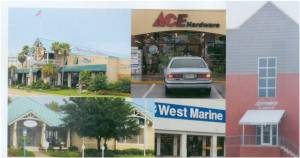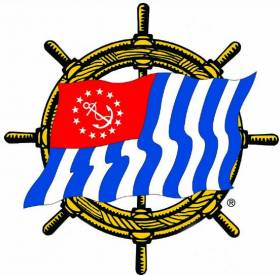User Tools
This is an old revision of the document!
Table of Contents
U.S. Power Squadrons
Coast Guard Auxiliary Best Practices
USPS Joins the Auxiliary in the Marine Dealer Visitation (PV) Program
Members of the US Power Squadrons can now qualify as Program Visitors, alongside its Auxiliary partners. The Recreational Boating Safety (RBS) Partner Visitation Program (see http://wow.uscgaux.info/content.php?unit=V-DEPT&category=rbs-partner-visitation) is a key, community outreach program that encourages business – particularly those with a marine orientation – to display boating safety literature. The Auxiliary or USPS Program Visitor works with the dealer to set up and maintain the display.
As the USPS joins the Auxiliary in the Dealer Visitation Program, it's clear the the display rack becomes neither an Auxiliary display rack nor a USPS display rack, but a RBS display rack, to which both organizations contribute boating safety material and notices of upcoming classes and RBS events.
It's another example, as the next article shows, that “Working Together, We Can Leave a Bigger Wake.”
Aims and Principles - Working Together, We Can Leave a Bigger Wake
The first time I met Bud Lomastro, the PR Officer of my local Power Squadron, he said, “You know, when – between the Auxiliary and the Power Squadrons – we're only reaching about 3% of the recreational boating public with our courses and vessel exams, it's hard to pretend that we're in competition with each other.”
He's right. By combining our efforts, we can “leave a bigger wake.”
By approaching media “gate keepers,” such as assignment editors, news editors, and feature story writers together with our USPS counterparts, we can legitimately claim to represent a larger share of a media's readership/viewers, thereby increasing our chance of coverage.
Or, perhaps by working in parallel, we can effectively double our publicity efforts, our personal contacts, media contacts, even signage and handouts. In other words, working alongside each other, we are likely to significantly increase attendance at our events, such as “VSE Blitzes,” Safety demonstrations, etc.
Now perhaps, at some of those events, one gorup or the other will “capture” some of the vessel exams or new members at that event – however, if our extra coverage draws more attendees, then each organization may wind up with more vessel exams, class attendees, or new members than either group would have garnered alone.
And because, although we share common educational and safety goals, our organizations are built on different foundations, each group will probably attract different members. Because we move in different circles, one group's members may have contacts (personal, professional, and in the media) that the other's do not. And because we are different people, “their” members may have skills that “our” members do not. And resources that the other group may not. “They” may have members qualified to teach classes in areas where “we” have few or none.
Some USPS chapters have advertising budgets to publicize activities; while perhaps the Coast Guard Auxiliary has name recognition that the Power Squadrons are still building. Joint advertising may well benefit both organizations.
Many families belong to both organizations. So some USPS members who are not yet (or no longer) Auxiliary members may want to join your flotilla; and some Auxiliary members may find expanded contacts in their local Power Squadron.
Many members of the Power Squadrons own boats; Encouraging cross-membership may increase a flotilla's number of operative Auxiliary facilities.
Finally, there are some editors and event organizers, including some who came of age during the Viet Nam years, who may still have a bias against anything military (we have found that in our division); Approaching them in partnership with the USPS may open those doors.
In short, by building cooperation between two organizations that should be natural allies, we can enhance our ability to get our message out to our target audience, the boating public. By “leaving a bigger wake,” perhaps we can generate more awareness of, and interest in, our mutual message.
(It’s true that, by leaving a bigger wake, we may rattle a dish or two in someone's galley. Perhaps that’s not all a bad thing, if that’s what it takes to wake up some members on both sides to the benefits of working together.)
Let's expand our focus beyond the 3% of the recreational boating public we currently reach to the 97% who need us more than they know.
–Stephen Ellerin BC-BLU 14:43, 30 May 2012 (EDT)
What is USPS
Organized in 1914, USPS is a non profit, educational organization dedicated to making boating safer and more enjoyable by teaching classes in seamanship, navigation and related subjects. USPS members are boating families who contribute to their communities by promoting safe boating through education. USPS members enjoy participating with fellow members on the water and in the classroom. USPS has nearly 40,000 members organized into over 400 squadrons across the country and in some US territories. USPS is America's largest non-profit boating organization and has been honored by three US presidents for its civic contributions.
What are the activities of USPS
Each squadron's activities involve the three primary objectives of USPS: community service, continuing education, and enjoying the friendship and camaraderie of our fellow members.
Training
Every squadron offers carefully planned courses in subjects like Seamanship, Piloting, Plotting and Position Finding, Celestial Navigation, Cruise Planning, Engine Maintenance, Marine Electronics, Sailing, and much more. These courses are taught by experienced member instructors, and members who complete them are recognized.
Social Activities
Participating both on-the-water and off with fellow members who are skilled in boating is a rewarding and enjoyable experience. On-the-water activities include cruises, rendezvous, sail races, navigation contests and even fishing derbies. Activities ashore include meetings with marine programs, parties, dinner-dances, picnics and field trips
Organization
Power Squadrons & Auxiliary work together
- USCG Auxiliary and US Power Squadron Working Together (Coast Guard Auxiliary Live)
- U.S. Power Squadrons, Coast Guard Auxiliary to boost boating safety efforts (Boating Times Long Island)
=External links=
USPS_Program_Visitation
{| cellpadding=“30” cellspacing=“0”
USPS benefits
There are many benefits to the Power Squadrons and its members. Program Visitation increases the public’s awareness of the Power Squadrons, its goals and its missions. The literature display is also an excellent way to advertise Power Squadrons programs like as America’s Boating Course, boater education programs, vessel safety checks, and other squadron activities.<br />
It enhances the Power Squadron’s image as an organization dedicated to promoting boating safety. You have the satisfaction of knowing that by participating in Program Visitation, you help save lives and property. Participation also provides an venue for recruiting new Power Squadron members. On an individual basis, participation in the program can earn the member a Merit Mark.
The Program Visitor
 The Program Visitor, or PV, is the key person in the Recreational Boating Safety Program Visitation program. <br />
The Program Visitor, or PV, is the key person in the Recreational Boating Safety Program Visitation program. <br />
The success of the program rests squarely with the PV. The PV is a specially trained and certified Power Squadrons member. He or she must be very knowledgeable about Power Squadrons missions, recreational boating safety, and the U.S. Coast Guard recreational boating safety program. This knowledge comes through experience in the Power Squadrons and Program Visitation training. We will discuss this training in a moment.
Program Partners
 A program partner is any community business or facility where the public is that will allow the Program Visitor to place a boating safety literature display rack.<br />
A program partner is any community business or facility where the public is that will allow the Program Visitor to place a boating safety literature display rack.<br />
Traditional partners include marine dealers, marine retail outlets, and boating supply stores. Non-traditional partners include any establishment that might be visited by recreational boaters. Examples include: doctors’ offices, gas stations, and hardware stores.
What we Distribute
Just about anything can be placed in the literature displays. You can use information from the Coast Guard or from any organization that provides you literature, or from your state or local authorities, or you can design your own pamphlets and brochures locally. You are only limited by your own imagination. <br />
You can promote local Vessel Safety Checks, boater education classes, or membership in the US Power Squadrons.
Resources
- What is Program Visitation? (briefing) (ppt 1.7 MB]<br />
- What is Program Visitation and Why is it Important to the U.S. Power Squadrons? (article) (coming soon)
- PV Train-the-Trainer presentation (coming soon)
- PV Training Manual (coming soon)
Frequently Asked Questions
- When will Program Visitation become available within the USPS?
- January 2013
- Will Auxiliary handouts be available to the USPS?
- Selected Auxiliary handouts will be available to USPS through the USPS HQ in Raleigh.
- Will the Auxiliary provide brochure displays?
- Yes, through USPS HQ in Raleigh.
- Can USPS & Auxiliary brochures be in the same display?
- Yes
- Can USPS and Auxiliary share space in each others’ displays?
- Yes. Items such as education classes, VSC locations, etc. are highly encouraged.
- Will the USPS require certification prior to visiting “Partners”?
- Yes, USPS will work with local Auxiliary flotillas to qualify members.
- Will the USPS PVs receive special recognition?
- Yes, Merit Mark credit
- Will a Program Manual be available?
- Yes, it is being developed now
- How will duplication of USPS and Auxiliary visits be avoided?
- The primary concern should be to ensure the material gets to the public via the Partner. Local Flotillas/Squadrons should work together. If there is duplication, so be it. Duplication might not be bad. It will ensure the public gets promotional material (local classes, recruiting, etc.) from both organizations.
- Will new USPS Partners be added to the CGAUX Master Partner list?
- Yes, A new database is being developed
- What happens if I don’t conduct a minimum of four visits per year?
- You will have to conduct a minimum of two supervised visits to regain your certification. You will then be required to conduct you four visits during the rest of the year.
Contributed by
Joe Reichal, DVC-VP<br /> Mike Wiedel, USPS Safety Committee



